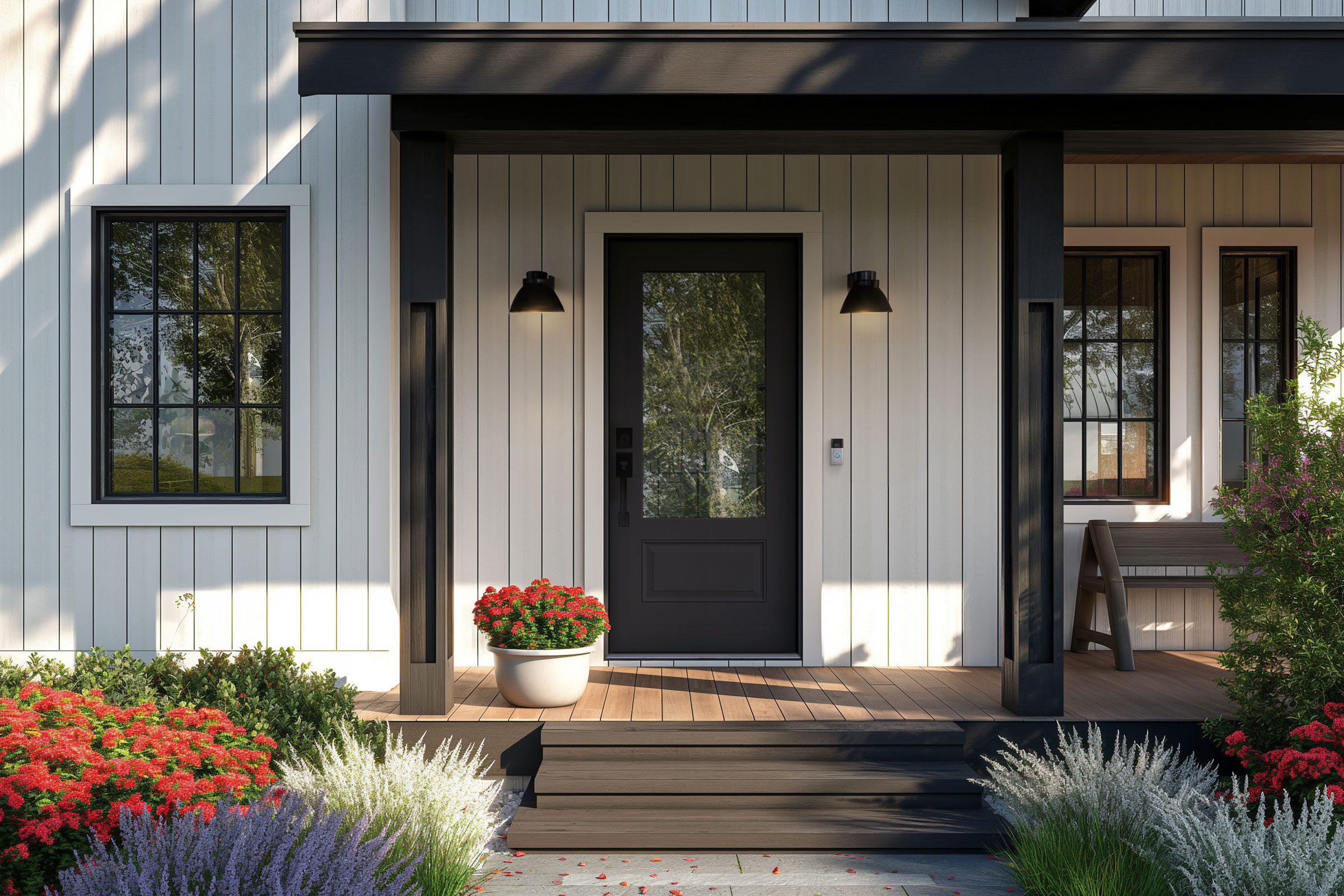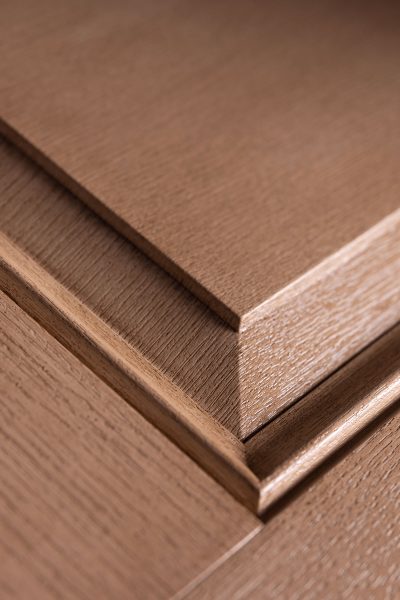Story at a glance:
- Door designs are shifting to provide more sunlight, and glass and fiberglass materials are becoming more popular.
- Modern doors need to balance homeowner’s desire for sunlight with their need for privacy.
- As the climate changes doors will need to withstand extreme weather and leave a light environmental footprint.
Doors have long served as sites of connection and retreat, bridging one realm to the next for thousands of years.
From robust Sycamore Fig slabs that enclosed the tombs of ancient Egyptian elites to iron-locked passageways that defended the barrier walls of Medieval Rome, doors tell the story of humanity. They also broadcast cultural and religious beliefs, with mezuzahs marking the doorposts of Jewish homes and red doors warding off evil spirits in Chinese tradition.
Over time door designs have ranged from the practical (automatic doors to help waiters carry plates inside; revolving doors to keep wind and snowfall out) to the ceremonial (certain Holy Doors are sealed from the inside, only to be open during religious holidays). They’ve spanned from Gothic to Georgian, Romanesque to Renaissance, and every style in between.
Nowadays designers and manufacturers are adjusting entryways to fit the needs of the modern consumer—and they’re leaving no door unopened in the process.
Let There be Light
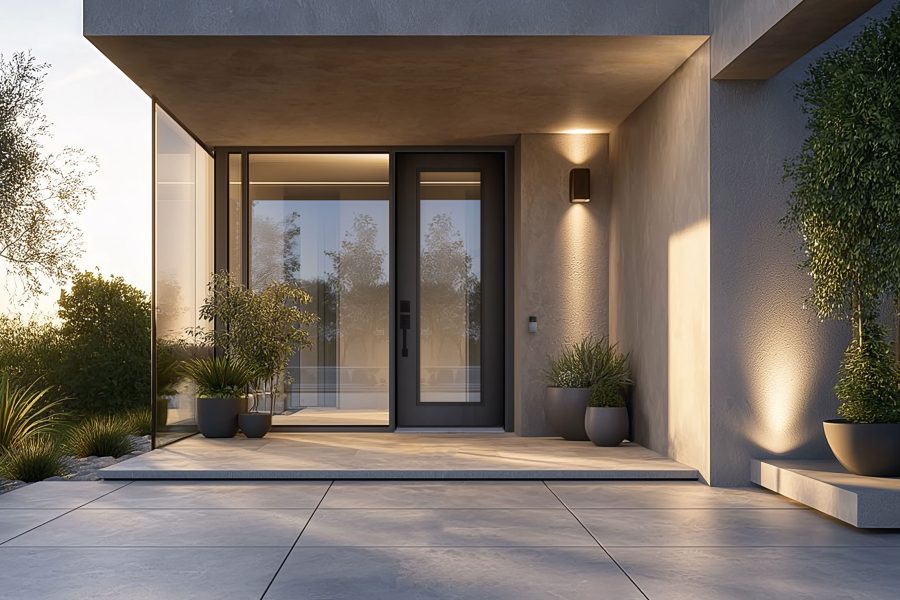
Photo courtesy of ODL
In a residential context doors have always acted as barriers between a home and its environment. Now more homeowners are looking to bring the outside in.
“Historically there was a lot of decorative glass on doors. You got a little bit of light from the glass, but it was really for style purposes,” says Denise Quinnette, executive vice president of engineering and product management at ODL Doors. But as people become increasingly aware of the benefits of natural sunlight, she’s noticed an uptick in doors with large-format glass and very thin frames.
For homeowners looking for natural light and clean lines, ODL offers flush-glazed glass doors in many styles. These embed glass directly into doors and streamline framing, making the glass a more prominent part of the overall design.
“Some of the other flush-glazed doors on the market don’t have the clean, sharp lines we have,” Quinnette says. “It’s a more seamless construction that elevates the home aesthetic.”
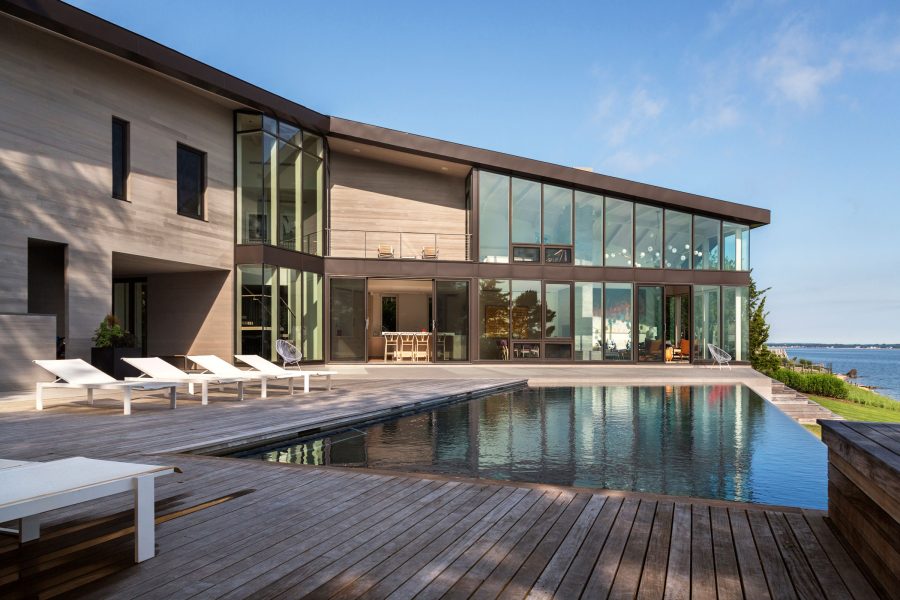
For the Red Creek Road Residence, Marvel used glass to ensure the front door was immediately visible among the exterior cedar. Photo by David Sundberg
In addition to flooding home entrances with light, large-format glass doors serve an important design purpose: They are more legible on homes with natural, unfinished siding. Many architects are turning to doors with more glass for this very reason. For the Red Creek Road Residence, architects used glass to ensure the front door was immediately visible among the exterior cedar.
“It reads as a gap in the wall that signifies the entrance rather than the door itself,” says Magnus Westergren, an associate at Marvel, who designed the home.
Safety, Privacy, and Energy Efficiency
“Doors impact not only the aesthetics but also very much the functionality of the home,” Quinnette says. As more manufacturers embrace glass, they will also need to consider safety and security. Older adults in the US are staying in their homes for longer, which means more doors will need to be ADA-compliant and easy to maneuver for those with limited mobility. Privacy will also be key, as some homeowners may feel more comfortable with textured glass that obscures the view to the inside while still allowing in plenty of light.
In a rapidly changing climate, glass will also need to be able to stand up to extreme storms while leaving behind a light impact. Research shows that triple-paned glass can be upwards of 40% more energy-efficient than double-paned, and it can be retrofitted with inert gas for additional insulation. As certification bodies like ENERGY STAR look to tighten their standards for residential and commercial properties in the future, these highly insulated materials will likely be in higher demand. “As you put more glass in, how do you make sure you don’t lose energy efficiency in the doors? How do you make sure you have the structural integrity that you need?” Quinnette predicts these questions will influence door design for years to come.
The Natural Look
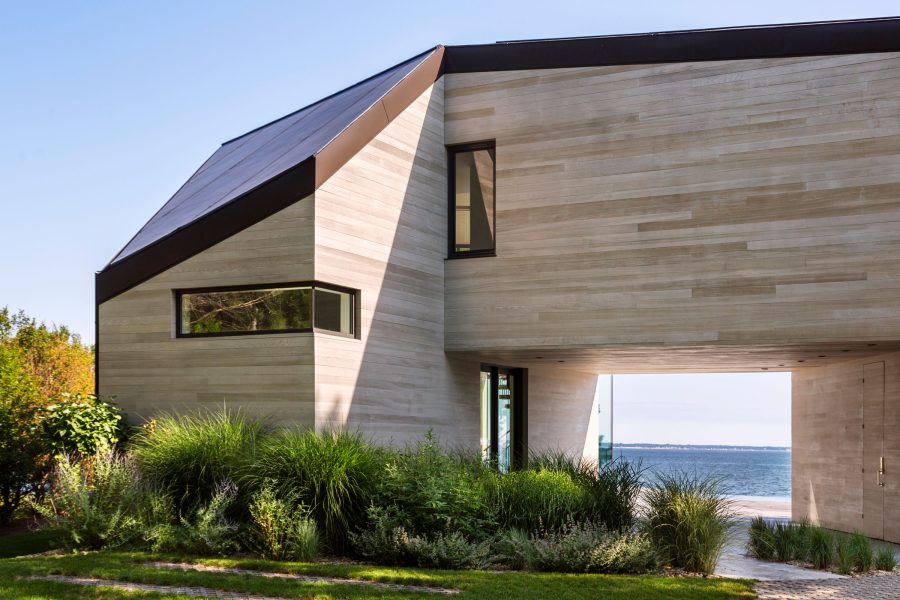
The Red Creek Road Residence designed by Marvel is a 5,000-square-foot weekend residence located on the Great Peconic Bay in South Hampton, New York. Photo by David Sundberg
The front door is the first opportunity for people to engage with a space, and it’s often the part of the building that guests get the closest to. “The fact that doors have a tactile element means that they become a lot more memorable than other parts of the facade,” says Marvel’s Westergren.
Since doors are where first impressions are made, their materials and hardware are essential. Most residential doors are made out of wood, fiberglass, or steel, and each materials comes with its own set of pros and cons.
While natural wood has a beautiful grain, color, and weight, it tends to be more expensive and prone to warping. Over time it may not form as tight of a seal with its frame, impacting the energy use and thermal comfort of a home. Quinnette estimates that only 5 to 10% of new doors are made from wood for these reasons.
But when one door closes, another opens. Quinnette has seen the market increasingly move toward fiberglass options, which are durable and well-insulated. “Every year we see fiberglass doors taking over more of the market share,” she says.
Fiberglass can be treated to resemble solid wood for a sliver of the price tag. ODL went to great lengths to emulate the warmth and texture of wood with its fiberglass Rift Cut line and even created a wooden door model to ensure the texture and staining were just right. “From a curb perspective it’s really indistinguishable whether you have a fiberglass door or a wood door,” Quinnette says.
One downside is that fiberglass is more difficult to reuse or recycle than wood or steel. The composite material must be manually broken down into its constituent parts that can be used for lower-value applications (like planks for decking or material for park benches). As fiberglass becomes more popular ODL and other manufacturers are looking to minimize its construction waste and find innovative ways to give it a second life.
Unlocking Innovation
When asked to imagine the door of the future, experts in both manufacturing and architecture predict some high-tech elements. “Some of the buying power is moving away from the baby boomers to the younger generations—and they’re very tech-savvy,” Quinnette says.
Smart security features like facial recognition software, doorbells that detect motion and record video, and voice control locks are posed to gain popularity among a new generation of homeowners.
ODL is also working on giving door glass the smart treatment, with technologies that automatically shade the glass from within on sunny days as well as obscure the view from the outside for privacy. “Right now those are two different technologies, but we’ll be looking to see how we could accomplish both of those with the same tech,” Quinnette says.
The industry will also need to figure out the most efficient way to power these smart upgrades—be it by installing a battery into the door itself or running wires through its hinging or frame. Solar energy could help provide a clean source of juice, as long as doors have contingency plans for rainy or overcast days.
Even as these technologies go mainstream, Westergren hopes that homeowners still hang onto old-school door vestiges like keys. “They’ve been around for thousands of years,” he says. “They should stick around for longer.”
The Door to Tomorrow
- Closeup of a stained ODL door. Photo courtesy of ODL
- An ODL door is seen here in espresso. Photo courtesy of ODL
The front door can pull together a commercial or residential project, keep interiors safe from the elements, and serve as a gateway into the world of a building. Choosing the right one also opens up new design possibilities, helping to break up a building’s exterior or fill its interior with light. “If you’re spending a bit of money on a project, it’s worth it to spend it on doors,” Westergren says.
As we unlock the doors of tomorrow, we’ll likely find them equipped with smart security systems, innovative weatherproofing, and adaptable designs that provide privacy, storm protection, and sustainability benefits. Talk about a grand entrance.

